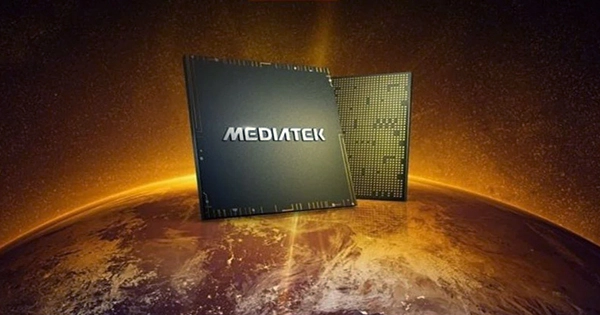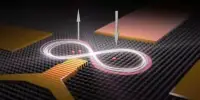In addition to discussing its Filogic 880 and Filogic 330 WiFi 7 solutions (announced in May 2023) at its most recent Executive Summit, MediaTek also provided live demonstrations of both the router and client sides. It is incredible that one of the demos achieves a speed of 13Gbps between two WiFi 7 devices.
If you’re not aware of these two platforms, Filogic 330 is built into clients like laptops and Smart TVs, while Filogic 880 will power WiFi 7 in the router.
The technological prowess is nonetheless astounding and provides a glimpse of where consumer-level wireless networking is likely to go in the near future, despite the fact that these demos are designed to demonstrate the best-case scenarios.

In this instance, a demonstration laptop had external antennas, and two WiFi-7 router units were nearby. The laptop example indicates that although it is not a real-world scenario, the final WiFi 7 performance may be constrained by the antenna design rather than the processor. This once more demonstrates that many problems with wireless networking also exist in the analog world.
The highest potential bandwidth of the Filogic 880, which can connect to numerous WiFi 7 devices at once, is 36Gbps. Even for people with fast equipment, that is a daunting number. I still prefer cable Ethernet because of its dependability and low latency, but after watching these demos, I’m tempted to give wireless another shot on my main PC.
Meaningful features of the Filogic 880 include a VPN accelerator (tunneling offload engine) and a hardware cryptography engine. More people than ever before need these services as a result of the increase in work-from-home employment.
Filogic 880 has two 10Gbps wired Ethernet connections for the most demanding users, which could be quite useful for transferring files between two workstations on the local network. That is presuming that such machines support 10 Gbps Ethernet, which is very uncommon without spending $100 to $300 on an adaptor. Although expensive, SMBs and power users would value the option.
All of this performance is made possible by some of the most cutting-edge radio and signal processing technology, including operating multiple frequencies (MLO, Multiple Link Operation), supporting all WiFi bands, advanced beamforming, and highly parallel processing.
The Filogic 380 is a client-side WiFi 7 chip that typically talks to one router device, or mesh node, at a speed of up to 6.5 Gbps. It achieves such rates by using simultaneous bands and channels. It’s hard for me to envision a situation in which WiFi 7 performance is constrained by the chip rather than by the antenna configuration, the WiFi environment, or the router. It appears to be a wise long-term investment.
The introduction of WiFi Mesh networks, WiFi-6, and WiFi 6E over the last few years has revolutionized WiFi. With strong demos from MediaTek, it appears like WiFi 7 development is doing nicely. This provides OEMs with a fantastic connectivity foundation upon which to develop, and it’s a fantastic incentive to utilize MediaTek as the overall platform (including SoC) rather than experimenting with different SoCs. CES 2023 will likely feature additional demos and possibly product announcements.














